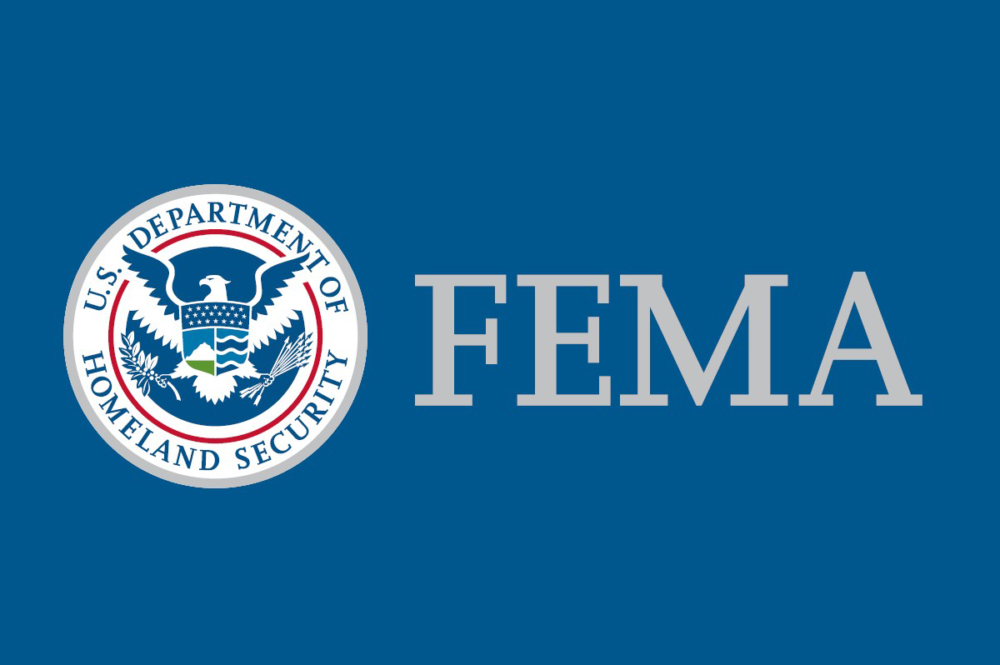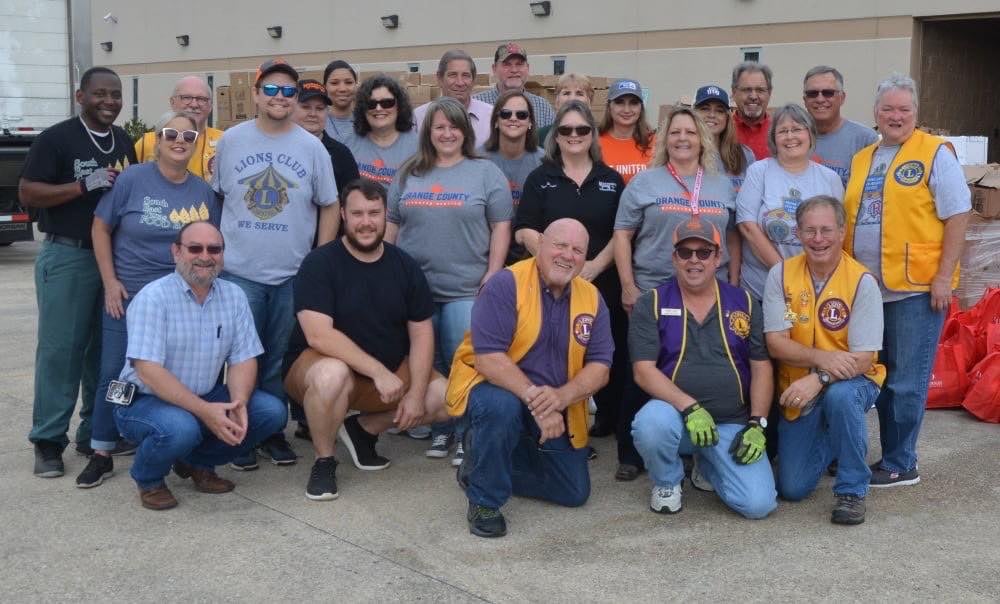Harvey – Six Months Later One storm, two outcomes
Published 8:57 am Saturday, March 3, 2018
By Ginger Broomes
The Orange Leader
They call it the storm, when they talk about it and they’re still talking about it, six months later.
They’ll talk about it for years, probably. Like Ike, and Rita before it. The storm. Not Hurricane Harvey, but the storm, the flood.
In convenience stores, the grocery, in line at the home improvement store, where they still struggle to keep rebuilding items in stock and the lines remain long. Here in this corner of southeast Texas, neighbors check in with one another while conducting day to day business, or, as everyone calls it, “the new normal.”
Hurricane Harvey pummeled southeast Texas with more rain than any other weather event. Over and over the stories collect in town, more of the same, with slight variations. Devastation so massive and widespread that it is hard to comprehend.
It becomes overwhelming.
But with such widespread devastation, and so many affected, one can only take in what’s going on in and around their day to day lives.
Neighborhood after neighborhood of course has the same story.
Jeff and Susan Eby in Little Cypress, weren’t spared from the flood either. They’ve lived in the same home for over 20 years and have never had a flooding issue.
An RV has become a permanent fixture in their driveway.
Their neighbors don’t mind, as many of them are in the same boat – with either RVs taking up space in their own drives until their homes become livable again, or storage trailers. The Ebys took on a foot of water in their home, and they say they still have another six more months before they can move back into it.
Having lived in Orange most of their lives, they too have been through Hurricane Rita, and later Ike. But they both agree that Harvey was the one they didn’t see coming.
“With Rita and Ike, we had about $30,000 in damage,” Jeff said. “Wind damage, shingles. But we could still live in our house. With Harvey, it was about $130,000.”
The day of Harvey, both Jeff and Susan were working, Jeff as a supervisor at Giglio Distributors and Susan as a teacher at Little Cypress Junior High.
“We were sitting here barbequing, knew there wouldn’t be work the next day, we didn’t evacuate because there’s just no way it’s gonna flood,” Jeff said.
But the rains came and didn’t let up.
A friend’s father in Mauriceville started taking on water so Jeff jumped in his lifted truck, got him out of the home, came back, where the rain just “came on and it came on with a vengeance”.
About 2 a.m., their elderly next-door neighbor started taking on water. Jeff and some neighbors went to help her.
“Between 3-3:30, water started coming in,” he said.
They would’ve had about 30 minutes to get all of their 20-plus years’ of belongings and get out. They had sandbags, but Jeff said that with that amount of nonstop rain, they would’ve had to dug a moat.
As the water came into their home, it was also flooding others on his street, in no particular order, the ditches overflowing with rainwater.
When the rain finally stopped, trapped and flooded, they stayed across the street, sheltering in the second story of that neighbor’s otherwise flooded home. There was no power, and no way in or out of the neighborhood without a boat, even in a lifted truck. Once the water receded enough for Jeff to drive out in his truck, they drove to Starks, LA before they found an open convenience store.
“And the next day you couldn’t get back there (to Starks),” Susan said, talking about when, after Harvey had passed, the area around the store flooded again because of the water let out from the Sabine.
Only two homes did not flood in their immediate neighborhood. Jeff and Susan had lost everything that was not more than a foot off the ground. Furniture that was only a couple of years old. Appliances. Even bathtubs had to be removed. The carpet was only a year old in the house. Nothing was spared; every single door, in and out, and doorjambs had to be torn out.
It took them five days to strip everything; and then word came that the flooding had caused the wells to be contaminated with E. Coli, and they were without water in the home until it could be fixed.
Then there’s the cost of the things you cannot replace.
Susan lost her wedding dress. Family photos, keepsakes.
Luckily the Ebys had flood insurance.
The delays in their case are mostly the availability – or lack thereof – of local contractors. They remain on many subcontractors’ lists, determined to endure the wait to ensure they use someone reliable and hopefully avoid the scams and high prices plaguing those who cannot wait.
Both Jeff and Susan agree that nothing like this had ever been seen, even during other hurricanes. Previous hurricanes left behind wind damage, but most people had insurance for that. Flood insurance is not a common thing to have, especially if you are not in a flood zone, as the Ebys and many others aren’t.
They try to laugh about camping out in their own driveway – trips from the RV into the house to use the bathroom that still works; three people – them, and their 20-year-old daughter – stuck in a trailer for six months now.
There have been many, many tough times. They’ve just kind of gotten used to it.
“When you come home from work because you’re working all the time because you still have to pay bills, and it’s the same work (on the house) waiting for you it gets tough.” Jeff said.
“And then you go to work and it’s the same condition,” Susan remarks; her school has just finished hosting another school whose campus was flooded, but still, nothing is close to normal.
Her building still has no flooring, no doors, and missing walls. She’s shuffled from classroom to classroom as they’ve made ways for displaced students.
She’s seen so many kids who have lost everything.
They feel guilty because they had flood insurance when they talk to someone who doesn’t have it. People who evacuated out of their homes with only the clothing on their backs.
“It changes the way you do everything. You learn how to live with the bare minimum,” Susan said.
The Ebys say that they chose to rebuild because they have so much invested in their home. It was the first home they ever bought, and where they’ve raised their kids. They love Orange but both agree that if it ever happens again, they’re out.
When asked if they’ve seen any good come out of this storm Susan said “Oh yeah, everyone’s helping everyone. People were bringing us food all the time. People that don’t normally talk to their neighbors got out and checked on their neighbors. It’s brought a lot of people closer together.”
The only help they saw immediately following the storm were neighbors on boats rescuing people, along with the Cajun Navy out of Louisiana.
What advice would they give to others in their situation?
“Put things up, take lots of pictures, before and after,” said Susan.
“Everything on 2-foot-tall cinderblocks.” Jeff said. “And patience.”
Across town, on Meeks Drive, house after house sits empty, driveways filled with contractor trailers or RV’s housing the homeowners. Just off of Meeks is the neighborhood of Oak Creek Village – a subdivision that was hit even harder by floodwaters.
Tod Hurst is a lifetime Orange resident whose story is similar to the Ebys in that he never needed flood insurance and had never flooded.
He’d also gone through previous hurricanes that didn’t match Harvey’s damage. Like the Ebys, his home also flooded and he lost everything. But that’s where the similarities end.
When the water rose so quickly, he, his mother, his son and his son’s fiancée were trapped as the depth in their home reached three feet.
It was so unexpected that they, like so many others, didn’t realize the severity of the situation until it was too late to leave.
He recalls his family sitting on top of the countertops of his kitchen as the water rose, and then swimming out the window when he realized it wasn’t going to stop.
“I swam out through the kitchen window,” He said. “Got a boat from a friend and came back and got family out.”
Once he’d rescued his own family though, he found many others needing help.
“They’re screaming for help. You can’t ignore that,” he said, adding that he kept going back for his neighbors until the boat finally ran out of gas, and he joined his family at a church shelter.
There they sat, wet, cold and in shock.
When the waters receded enough, he went back to his house. Plodding through the remaining one foot of water, he began tearing things out.
Gradually, the few things he thought he could save, he put on his front lawn, making it a makeshift living room. Many of his neighbors did the same and before long it looked like everyone’s life was in their front yard.
In the midst of leaving his things out to dry however, thieves soon made their way into the neighborhood, loading up appliances on their trailers.
There was still a foot of water in his home.
Tod, whose home is actually two living areas – one for him and an attached apartment for his elderly mother – didn’t have flood insurance for the same reason many others didn’t – he wasn’t in a flood zone and had never seen a flood.
FEMA eventually lent some financial help, but he is still in litigation with his homeowner’s insurance to try to pay for anything.
Six months later, he spreads his time between homes of friends, or sleeping on an air mattress in a gutted home with no air conditioning or heat. The home is nowhere near livable enough to bring his mother back.
He still manages to go to work every day and work on his home at night. He can’t afford to pay for contractors to fix anything, so he, his neighbors and some good friends do all the work themselves. Until recently, he was having to shower with a water hose in his back yard.
I ask him why he chooses to stay; his home is owned outright but is a gutted shell. He is not married and his kids are grown.
“Nowhere to go. I’d have to sell and, in this condition, I’d get half of what it’s worth,” Tod said.
Like the Ebys, he never saw any “official” help immediately after Harvey. Rescues were done by the Cajun Navy and neighbors helping neighbors. The kindness of friends has given him and his family places to stay.
He said that the worst thing to come out of all of this — other than thieves preying on people that are already down – is that he fears the town will never recover, that people will just give up and move on. Sometimes he has felt like giving up as well.
“I’d just started with Sabine River Ford a month before the storm,” Tod said.
He works in the service department and said the Ford dealership and Ford itself were more than generous. Donations poured in and the dealership provided food, cleaning supplies, and money to their affected employees. This generosity, coupled with seeing all his neighbors going through the same thing, keeps him going.
“Everyone’s helping. They’ll quit working on their house to come work on yours,” Tod said.
Now they look out for one another, whereas before they didn’t really know each other.
It gets overwhelming, there’s so much still to be done. But he started to feel better once he went from tearing things out, to putting things back in. As long as he doesn’t look at the whole picture of what still needs to be done. He also recuperates by performing with the band he created. They have an album coming out soon.
Tod now has flood insurance, but he said if there’s even an inkling of a storm like this happening again, he will get out first.
Today, it’s the little things.
There are still no walls in the house but he’s able to shower indoors.
Not too long ago, a neighbor who was photographing the aftermath took a picture of all of his stage props and musical instruments sitting on his front lawn, drying out.
Today that photo is the cover to his band’s upcoming first album.












